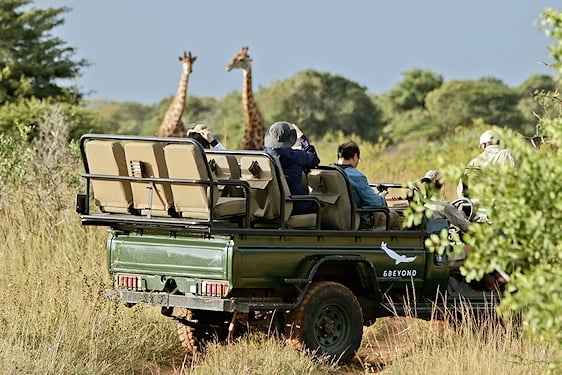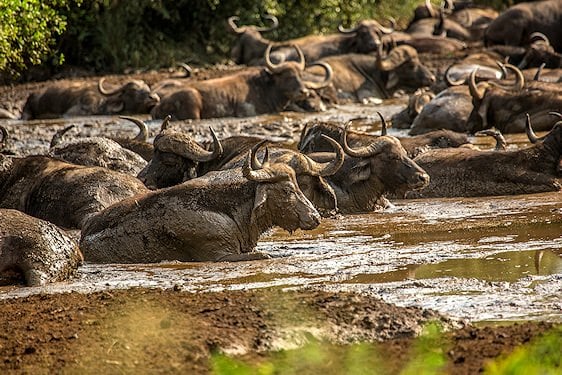- Home
- >
- African Travel
- >
- South Africa
- >
- National Parks
- >
- Kruger National Park
- >
- Mammals
- >
- Common Reedbuck
Description
Common reedbuck are medium antelope with shaggy, tawny coats; a pale rump; and white ear patches. Males carry forward-curving horns with ridged bases; females are usually hornless. When alarmed they whistle and bound away with heads high. Look for pairs near tall, moist grasslands and floodplains, especially at dawn or dusk.

These antelope occur widely throughout subequatorial Africa. Their range on the western side starts in northern Botswana, Angola, Zambia and Malawi. On the eastern side, they occur in South Africa’s KwaZulu-Natal Province, parts of Mozambique, areas of Limpopo where the Kruger National Park is situated, and north through Zimbabwe and Zambia to southern Tanzania.

Status
Assessed as Least Concern on the IUCN Red List. An estimated 73,000 animals occur across 14 countries in sub-Saharan Africa, with roughly two-thirds inside protected areas such as the Kruger National Park. They occur from about 300 to 2,000 m above sea level. Poaching for bushmeat remains the principal threat to local populations.

Habitat
This species often favors taller grass and is frequently found in fertile valleys with abundant water or near wetlands. It also occurs on floodplains and in savanna or woodland. Grass dominates the diet. In South Africa it occurs in the Drakensberg and the northern regions, including Kruger, where extensive grasslands persist.

Social Organization
Typically territorial and living in small groups of up to six members that may aggregate during the dry season as grazing declines. Each group has a dominant male with mating rights to resident females, plus a few young males and females. Nearing maturity, males disperse to bachelor groups before competing for territories.
Finest Safari Areas in Africa for Encountering Common Reedbuck
We recommend the following national parks and private reserves for the best chances of spotting common reedbuck on game drives and guided bush walks.

Social Behavior
Common reedbuck are relaxed but territorial. They do not scent-mark boundaries regularly and often trespass up to about 100 m into neighboring ranges without incident. They produce several high-pitched calls used in conflict or alarm. At first sign of danger, they whistle, then bound away with heads held high.

Reproduction
Reedbuck have no fixed annual season, though breeding is generally yearly. Courtship may include low-back stretching by males and licking of the female’s genitals. Females may interrupt several mounts. Gestation is roughly seven and a half months, after which a single young is born in dense cover.

Anti-Predator Behavior
The vulnerability of reedbuck, in general, makes them among the most vocal antelope when threatened. On detecting danger in thickets or shrubs, they whistle to alert others, then run with urgency. They may snort while fleeing, both to disturb cover and to signal ongoing risk to nearby animals.












